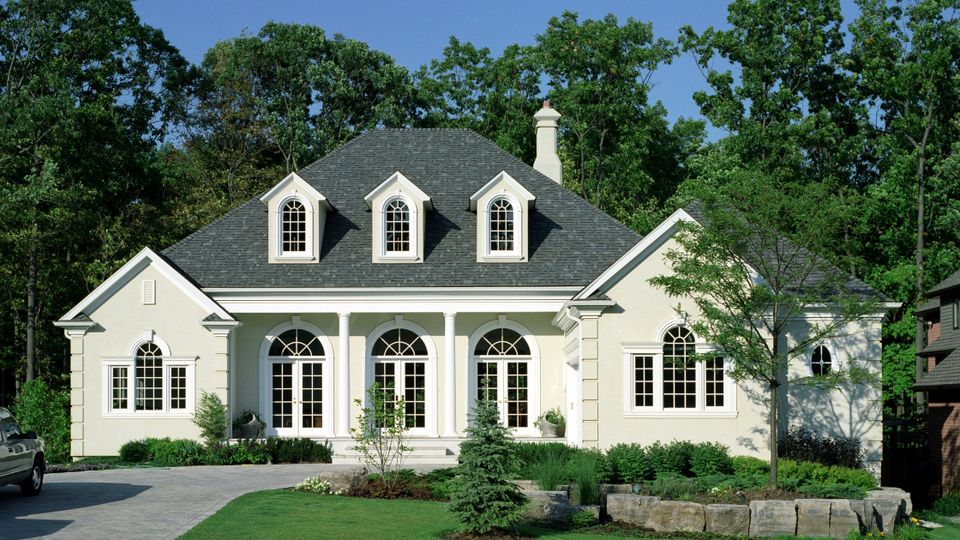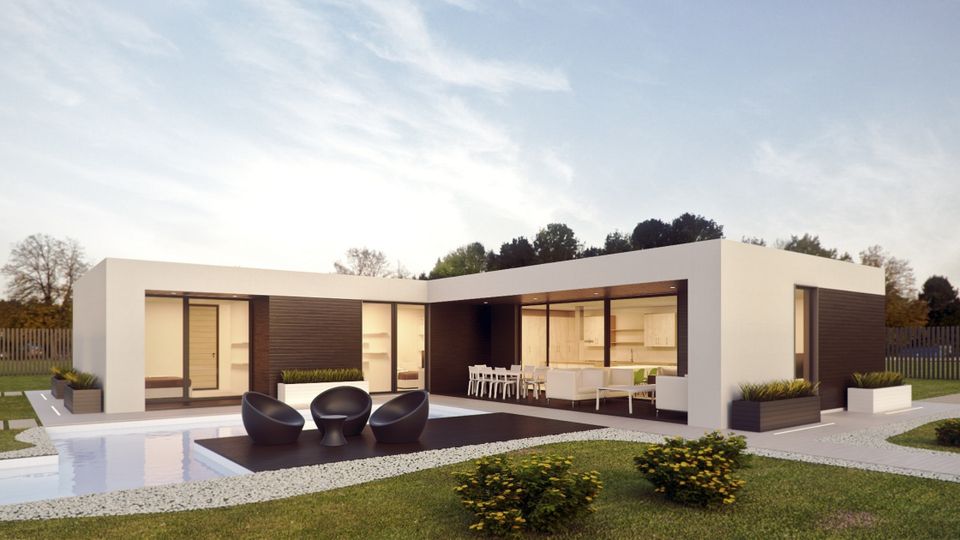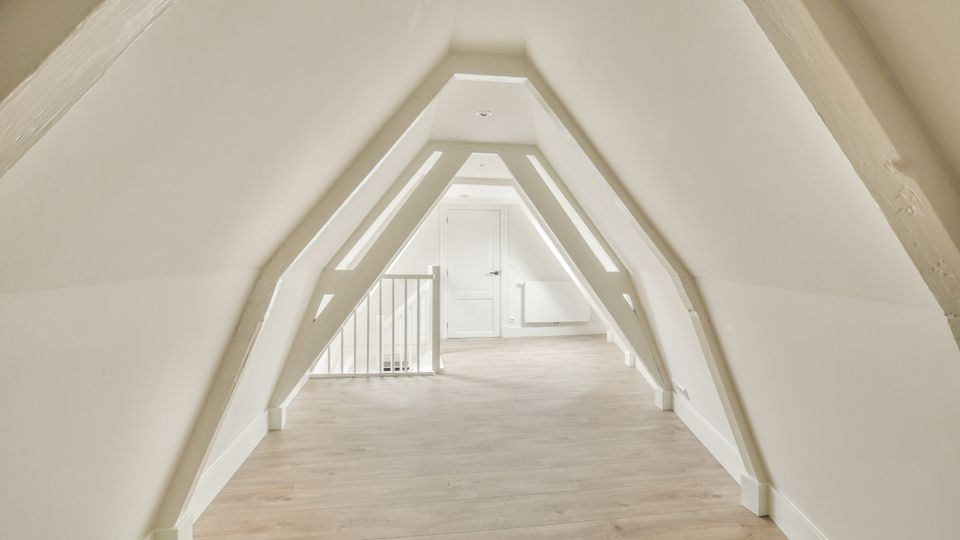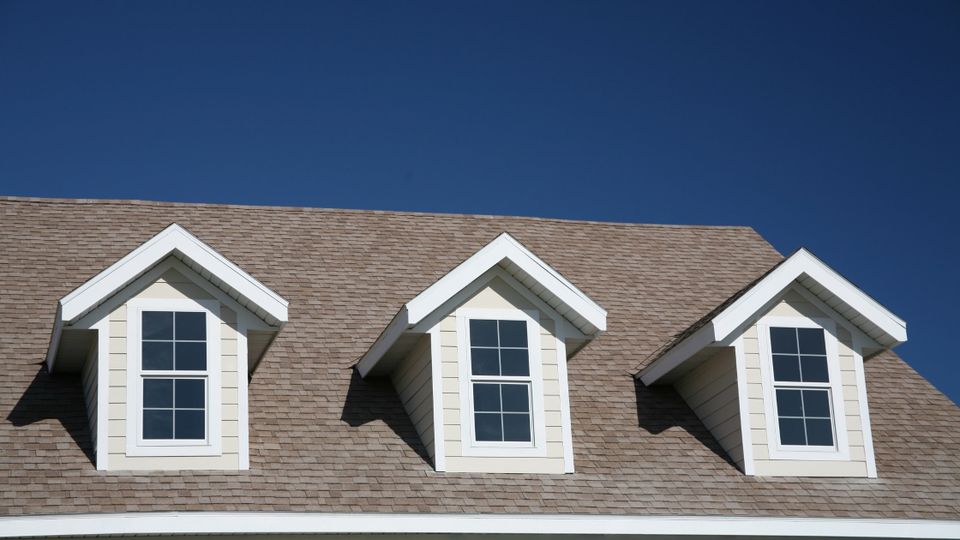

When building or renovating a home, choosing the right roof style is one of the most important decisions you'll make. Not only does your roof protect your home from the elements, but it also plays a significant role in the overall appearance and functionality of your property. From classic gable roofs to shed roofs, the variety of roof styles available today allows homeowners to select designs that suit their aesthetic preferences and practical needs.
This article will discuss popular roof types, their design features, and their benefits, helping you decide which style is best for your home. You'll also learn how roofing materials and architectural considerations affect each choice.
This article will discuss popular roof types, their design features, and their benefits, helping you decide which style is best for your home. You'll also learn how roofing materials and architectural considerations affect each choice.
Why Roof Styles Matter
Your roof does more than just keep the rain out—it plays a crucial role in your home’s curb appeal, energy efficiency, and overall durability. The type of roof you choose can make a big difference, offering unique benefits like improved drainage, enhanced resistance to wind, or even creating additional interior space.
Quick tip: When choosing a roof style, consider your region's climate. For example, a steep gable roof sheds snow more effectively in colder areas!
Quick tip: When choosing a roof style, consider your region's climate. For example, a steep gable roof sheds snow more effectively in colder areas!
The Classic Appeal of Gable Roofs

One of the most widely recognized roof styles is the gable roof. Known for its triangular shape, this roof style is simple, timeless, and highly functional. Gable roofs have two sloping sides that meet at a central ridge, creating a steep pitch that easily sheds rain and snow.
This style complements various architectural designs, including traditional, colonial, and contemporary homes. Gable roofs work well in areas that experience heavy rainfall or snowfall due to their excellent drainage capabilities.
However, gable roofs are not ideal in regions prone to high winds. Their tall triangular profile can be susceptible to damage during severe storms.
Quick tip: Gable roofs provide extra ventilation opportunities for your attic, which can extend the lifespan of your roof.
This style complements various architectural designs, including traditional, colonial, and contemporary homes. Gable roofs work well in areas that experience heavy rainfall or snowfall due to their excellent drainage capabilities.
However, gable roofs are not ideal in regions prone to high winds. Their tall triangular profile can be susceptible to damage during severe storms.
Variations of Gable Roofs
- Cross Gable Roof: Features multiple gables intersecting at right angles, adding dimension to the roof design and creating more interior space.
- Dutch Gable Roof: A combination of a gable roof and a hip roof, offering a unique aesthetic and extra attic space.
Quick tip: Gable roofs provide extra ventilation opportunities for your attic, which can extend the lifespan of your roof.
What You Need to Know About Flat Roofs

Flat roofs are a popular choice for modern homes and commercial buildings. Despite their name, flat roofs are not entirely flat—they have a slight slope to allow water runoff.
Minimalist and practical, flat roofs are often found on mid-century modern and industrial-style homes. They create usable space on top of the building, which can be transformed into rooftop gardens, patios, or solar panel platforms.
However, flat roofs require careful construction and high-quality roofing materials to avoid water pooling and leaks. They are best suited for areas with minimal rainfall.
Curious how roof designs like these can enhance home functionality? Read more in The Ultimate Guide to Roof Styles and Aesthetic Enhancements.
Minimalist and practical, flat roofs are often found on mid-century modern and industrial-style homes. They create usable space on top of the building, which can be transformed into rooftop gardens, patios, or solar panel platforms.
However, flat roofs require careful construction and high-quality roofing materials to avoid water pooling and leaks. They are best suited for areas with minimal rainfall.
Benefits of Flat Roofs
- Cost-effective construction and repairs.
- Energy-efficient with the right insulation.
- Usable outdoor space for recreation or utility.
Curious how roof designs like these can enhance home functionality? Read more in The Ultimate Guide to Roof Styles and Aesthetic Enhancements.
The Versatile Mansard Roof

A mansard roof, often associated with French architecture, combines style and functionality. This design features four sloping sides, with the lower slope being steeper than the upper slope. The mansard roof creates extra attic or living space and is perfect for homes that need additional storage or unique interior layouts.
This roof type pairs beautifully with Victorian and European-inspired home designs. However, it may involve higher upfront costs due to its intricate design and need for high-quality roofing materials.
Did you know? The mansard roof originally gained popularity in the 17th century during the reign of Louis XIV in France.
This roof type pairs beautifully with Victorian and European-inspired home designs. However, it may involve higher upfront costs due to its intricate design and need for high-quality roofing materials.
Did you know? The mansard roof originally gained popularity in the 17th century during the reign of Louis XIV in France.
Exploring Hip Roofs

Hip roofs are another popular choice for homeowners. Hip roofs have four sloping sides that converge to form a ridge at the top, making it incredibly stable and wind-resistant. Hip roofs work well in areas prone to hurricanes or strong winds.
Common in ranch-style homes, Mediterranean designs, and modern builds, hip roofs provide consistent ventilation and optimized drainage. They can also be combined with dormer roofs for added functionality and natural light.
Common in ranch-style homes, Mediterranean designs, and modern builds, hip roofs provide consistent ventilation and optimized drainage. They can also be combined with dormer roofs for added functionality and natural light.
Variations
- Hip and Valley Roof: Ideal for homes with complex layouts, offering a visually striking appearance.
Layers of History with Gambrel Roofs

The gambrel roof, commonly seen on barns and historic homes, features two slopes on each side. The lower slope is steeper, while the upper slope is shallower, creating a distinctive profile.
Gambrel roofs provide generous space for attics or lofts and are a hallmark of colonial and Dutch architectural styles. Modern homes, especially those in rural or farmhouse settings, often incorporate this nostalgic yet functional design.
Gambrel roofs provide generous space for attics or lofts and are a hallmark of colonial and Dutch architectural styles. Modern homes, especially those in rural or farmhouse settings, often incorporate this nostalgic yet functional design.
Practical Uses
- Maximizes attic space for storage or living area.
- Economical due to fewer roofing materials required.
Specialized Roof Styles to Know

Bonnet Roof
The bonnet roof is similar in structure to a hip roof but includes some distinct features that make it stand out. This roof design has two steeper slopes on the upper portion and two smaller overhangs on the lower edges, providing additional shelter beyond the exterior walls. The extra overhang is especially useful for protecting outdoor spaces such as porches or walkways from rain and sun. Its unique design not only enhances the aesthetic of a home but also offers practical benefits, making it a versatile option for different architectural styles.Curved Roof
The curved roof is a modern design that stands out due to its sleek and futuristic appearance. This type of roof can be tailored to suit a variety of shapes and sizes, offering a truly customizable option for architects and homeowners alike. Beyond its aesthetic appeal, the curved roof is highly functional in improving aerodynamic efficiency, making it an excellent choice for areas that experience strong winds. Its innovative structure also allows for better drainage, reducing the risk of water pooling.Dormer Roof
Dormer roofs are a classic addition to various roof types, offering both style and functionality. By incorporating vertical windows, dormers create extra interior space and bring in natural light without the need for a full structural expansion. Whether you are looking to add a charming aesthetic or maximize the usability of an attic or upper floor, dormer roofs are a practical and attractive solution. They’re commonly found in residential homes and are an excellent way to increase overall living space without significant renovation.Dome Roof
Dome roofs, inspired by classical and historical architecture, are a striking and timeless design choice. Their rounded shape creates a unique visual appeal that sets buildings apart while also offering excellent structural durability. Dome roofs are particularly resilient to varying weather conditions, as their curved design allows rain and snow to slide off easily. They are also energy-efficient, as their shape can help regulate interior temperatures. While often seen in churches, museums, and other grand structures, dome roofs are becoming increasingly popular in modern residential designs for their distinctive character and resilience.Choosing the Right Roofing Materials

Selecting the appropriate roofing materials is just as important as choosing a type of roof. Whether it’s the durability of metal roofing or the affordability of asphalt shingles, materials impact everything from aesthetics to energy efficiency.
When deciding on materials and roof design, consider how they interact with your home's structure and exterior walls to ensure a cohesive and durable result. For example, heavier roofing materials like slate or tile may require additional structural support, while lighter options like metal or asphalt shingles may place less strain on the framework.
Looking for more insight into how roof shapes and designs impact home design? Check out How Roofing Shapes Impact Home Design and Functionality.
- Metal Roofing is durable, lightweight, and energy-efficient. It’s ideal for curved roofs or high-wind areas.
- Asphalt Shingles are cost-effective and versatile, working well with gable roofs and many other designs.
When deciding on materials and roof design, consider how they interact with your home's structure and exterior walls to ensure a cohesive and durable result. For example, heavier roofing materials like slate or tile may require additional structural support, while lighter options like metal or asphalt shingles may place less strain on the framework.
Looking for more insight into how roof shapes and designs impact home design? Check out How Roofing Shapes Impact Home Design and Functionality.
Frequently Asked Questions
1. What is the most common type of roof?
The most common type of roof is the gable roof, known for its timeless triangular shape. It provides excellent water drainage and works well in many climates, offering durability and simplicity in design.
2. What are the advantages of a flat roof?
Flat roofs are a popular choice for modern architecture due to their sleek appearance and functional space. They are often used for rooftop gardens or solar panel installations and are relatively cost-effective compared to other roof types.
3. How does a mansard roof differ from other types of roofs?
A mansard roof features four sloping sides with two different pitches. This design creates additional living space under the roof, making it perfect for homeowners looking to maximize their home's interior space.
4. What is a gambrel roof most commonly associated with?
Gambrel roofs are often associated with barns and rustic architecture, but they can also be used in residential homes to provide a charming aesthetic and generous storage or attic space.
5. What is unique about a shed roof?
A shed roof is defined by its single slope, offering a minimalist look for modern homes. It provides effective water drainage and is a great option for homes in regions with heavy rainfall or snow.
6. What is a Dutch gable roof?
Dutch gable roofs combine the features of a gable roof and a hip roof, offering extra attic space and architectural interest. This hybrid type of roof is perfect for those seeking both functionality and a distinctive design.
7. Is metal roofing a good investment?
Absolutely! Metal roofing is highly durable, energy-efficient, and long-lasting. It can withstand extreme weather conditions and often outperforms other materials like asphalt shingles in terms of longevity.
8. Are asphalt shingle roofs still a good choice for homeowners?
Yes! Asphalt shingle roofs remain one of the most affordable and versatile options for homeowners. They come in a variety of styles and colors and are easy to install and maintain, making them suitable for almost any type of roof.
9. How do shed roofs, hip roofs, and gambrel roofs differ from each other?
Shed roofs, hip roofs, and gambrel roofs each bring unique designs and functionalities to a structure. A shed roof is a simple, single-sloped design that’s modern, cost-effective, and ideal for small buildings or additions. Hip roofs have slopes on all four sides, creating a sturdy and wind-resistant structure that offers great curb appeal for homes. Gambrel roofs, often associated with barns, feature two slopes on each side—one steep and one shallow—providing ample space for storage or living areas in the upper levels.
The most common type of roof is the gable roof, known for its timeless triangular shape. It provides excellent water drainage and works well in many climates, offering durability and simplicity in design.
2. What are the advantages of a flat roof?
Flat roofs are a popular choice for modern architecture due to their sleek appearance and functional space. They are often used for rooftop gardens or solar panel installations and are relatively cost-effective compared to other roof types.
3. How does a mansard roof differ from other types of roofs?
A mansard roof features four sloping sides with two different pitches. This design creates additional living space under the roof, making it perfect for homeowners looking to maximize their home's interior space.
4. What is a gambrel roof most commonly associated with?
Gambrel roofs are often associated with barns and rustic architecture, but they can also be used in residential homes to provide a charming aesthetic and generous storage or attic space.
5. What is unique about a shed roof?
A shed roof is defined by its single slope, offering a minimalist look for modern homes. It provides effective water drainage and is a great option for homes in regions with heavy rainfall or snow.
6. What is a Dutch gable roof?
Dutch gable roofs combine the features of a gable roof and a hip roof, offering extra attic space and architectural interest. This hybrid type of roof is perfect for those seeking both functionality and a distinctive design.
7. Is metal roofing a good investment?
Absolutely! Metal roofing is highly durable, energy-efficient, and long-lasting. It can withstand extreme weather conditions and often outperforms other materials like asphalt shingles in terms of longevity.
8. Are asphalt shingle roofs still a good choice for homeowners?
Yes! Asphalt shingle roofs remain one of the most affordable and versatile options for homeowners. They come in a variety of styles and colors and are easy to install and maintain, making them suitable for almost any type of roof.
9. How do shed roofs, hip roofs, and gambrel roofs differ from each other?
Shed roofs, hip roofs, and gambrel roofs each bring unique designs and functionalities to a structure. A shed roof is a simple, single-sloped design that’s modern, cost-effective, and ideal for small buildings or additions. Hip roofs have slopes on all four sides, creating a sturdy and wind-resistant structure that offers great curb appeal for homes. Gambrel roofs, often associated with barns, feature two slopes on each side—one steep and one shallow—providing ample space for storage or living areas in the upper levels.
Elevate Your Home with the Perfect Roof Design
Roof styles are a balancing act between aesthetics, functionality, and practicality. From the traditional charm of gable roofs to the sleek lines of flat roofs, the options are plentiful. Exploring different roof shapes helps you weigh what works best for your home’s climate, architecture, and lifestyle.
By understanding your options and consulting with roofing professionals, you can decide which roof type suits your vision and needs. Whether you’re renovating an old house or designing your dream home, professional guidance can help you choose a roof design that adds value and complements your home’s overall look.
By understanding your options and consulting with roofing professionals, you can decide which roof type suits your vision and needs. Whether you’re renovating an old house or designing your dream home, professional guidance can help you choose a roof design that adds value and complements your home’s overall look.
